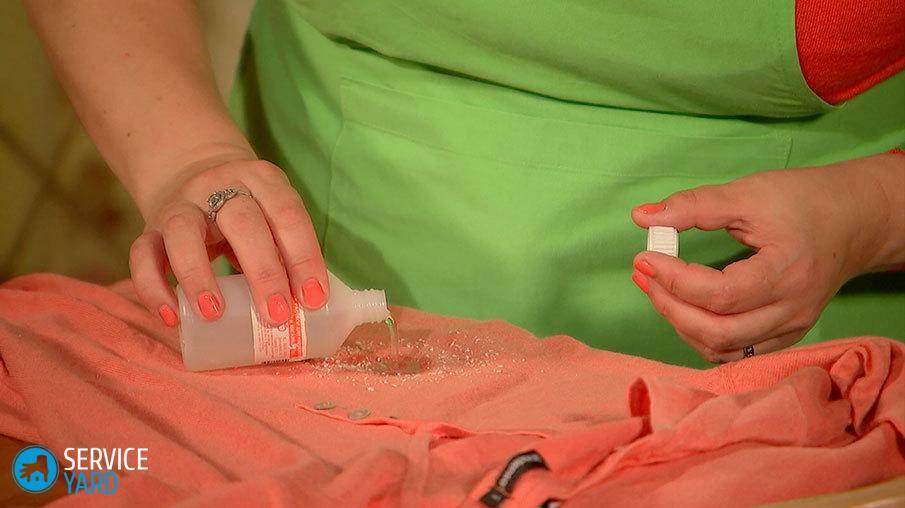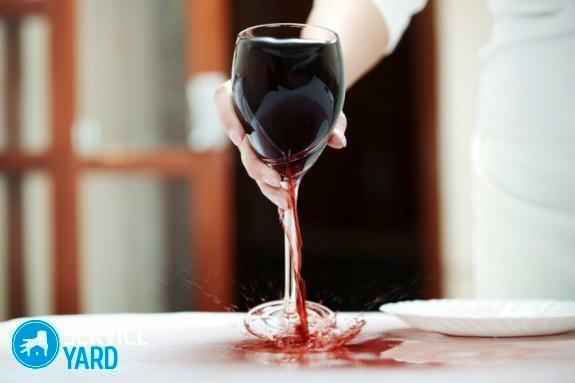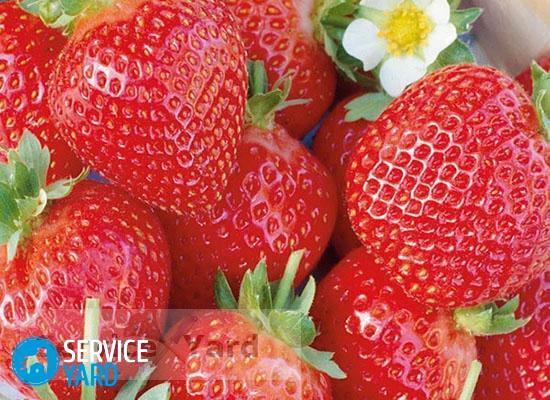 Despite the fact that at the present time, the most popular in the interior is considered to be low-key, minimalist style, many housewives still make out the premises in the traditional way, which can not do without in any way crocheted napkins. These cute design elements Finished give the interior view of, adding to the atmosphere of the room notes warmth and comfort.
Despite the fact that at the present time, the most popular in the interior is considered to be low-key, minimalist style, many housewives still make out the premises in the traditional way, which can not do without in any way crocheted napkins. These cute design elements Finished give the interior view of, adding to the atmosphere of the room notes warmth and comfort.
However, crocheted napkins have one rather significant drawback - they are almost not keep their shape and can look pretty messy, it will spoil all the impression of the design of the room. Fortunately, this problem is easy to handle - enough to know how to knit starched napkin.
Content
- What starch napkins
- The use of starch
- alternative methods
- Sugar, gelatin and glue
- How to dry products
What starch napkins
 Knit napkin can be made of cotton yarns (pure or with the addition of cotton, silk and lurex fibers) of different thicknesses. However, regardless of the material the product will inevitably somnotsya in the making, and because of openwork weaving not be able to keep in shape.
Knit napkin can be made of cotton yarns (pure or with the addition of cotton, silk and lurex fibers) of different thicknesses. However, regardless of the material the product will inevitably somnotsya in the making, and because of openwork weaving not be able to keep in shape.
When the napkin nakrahmalivayut on its fibers form a thin film, due to which the strands are not as susceptible to dirt, much more elastic and dense. However, do not starch products of dark color, as well as silk cloth, wool and synthetic fibers. Products dark shades after the procedure immediately covered with whitish patches. The structure of starch can damage silk, and synthetics and wool, and it does not take.
For starching crocheted napkins can be useful:
- starch;
- sugar;
- PVA glue;
- gelatin.
The use of starch
 To make the filigree products desired shape most commonly used ordinary potato starch - it is inexpensive, dense solution was obtained and, in addition, it has a bleaching effect. Rice and corn starch are used rarely - and one other, and have a much lower viscosity than the potato, so the procedure will be more costly.
To make the filigree products desired shape most commonly used ordinary potato starch - it is inexpensive, dense solution was obtained and, in addition, it has a bleaching effect. Rice and corn starch are used rarely - and one other, and have a much lower viscosity than the potato, so the procedure will be more costly.
The traditional way of starching is very simple - just to make a paste of starch and water and leave for a while there openwork product. Its hardness will depend on the concentration of the solution. The effect of the procedure will continue until the first wash.
Three main ways starching. For each of them require one liter of water.
- Soft. The liquid was dissolved one dessertspoonful starch. This method usually gives elasticity curtains, tablecloths and hanging knitted napkin.
- Average. For it will need a tablespoon of starch. In this manner, starches laced collars, crocheted napkins, laces and cuffs.
- Hard. For such a method would need two tablespoons of starch spoon. Rigid starching used to impart toughness and precise product shape created by knitting openwork - skeet, baskets, colors, etc...
In all cases the process of creating a paste of starching and will be the same:
- The required amount of starch should be diluted in a small amount of cold water, stirring well to prevent the formation of lumps. If the solution is prepared correctly, it should be uniform and resemble a liquid cream consistency.
- Residual water is brought to a boil and was poured in a thin stream into it starch liquid. Thereafter, the solution was allowed to boil again, stirring it continuously.
- The fire is turned off and allow the paste to cool to 30-35 degrees temperature.
If you want starched napkin starch, a sequence of actions will be:
- Cooled down to the desired temperature, the solution was poured into a basin.
- Is lowered into the paste previously laundered and bleached cloth.
- At some time left napkin in a basin (thinner thread - for 5-7 minutes, medium thickness - 10, and thick - 15).
- The napkin is removed from the solution and gently squeeze.
alternative methods
 For starching knitted napkins can be supplement starch auxiliaries. Regardless of what additional ingredients are used, manufacturing processing is performed by the same scheme.
For starching knitted napkins can be supplement starch auxiliaries. Regardless of what additional ingredients are used, manufacturing processing is performed by the same scheme.
- Salt. The use of this component adds shine wipes. Manner to that described above, the paste is prepared, thrown into the hot solution and a pinch of salt mixed well.
- Milk. It increases the amount of fiber products and gives a haze. For this recipe will need a liter of low-fat milk and a tablespoon of rice starch. First, you need to combine the starch with half a glass of cold milk and stir well. Then, milk residue is heated to boiling and, while stirring constantly, it is poured into the starch solution. Once the paste starts to boil, turn off the fire under it.
- Sugar. This makes the starch ingredient is harder solution. To the solution need 3 tablespoons sugar and starch spoon liter of water. The heated liquid sugar glass is dissolved and added into a beaker of cold starch. The remaining water was brought to a boil, it is poured into the starch solution and syrup, give again boil and remove from heat.
- Gloss starch. This way of starching will buy the product a glossy shine. 5 tablespoons need rice starch, 3 tablespoons talc powder spoon borax and a small amount of cold water. All the dry ingredients are combined with each other, and gradually adding the liquid mixture was adjusted to the consistency of sour cream. The resulting paste is wetted with a brush or a small piece of tissue and process all the product in whole or certain of its elements. Immediately afterwards ironed through cheesecloth warm iron.
- Dry method starching. If reluctant to tinker with the paste there, come to the aid of dry processing. Knitted cloth put on heavy white paper, fixing its edge pins. The product is sprinkled with a thin layer of starch, sprayed with water, covered with a top sheet of paper and a warm iron to iron or simply allowed to dry completely. For the dry method can be purchased in a store ready to spray with starch. This method is simple, but the effect of it will be short.
Sugar, gelatin and glue
 As strange as it may sound, but given the desired shape knitwear is entirely possible, and without the use of starch. For instance:
As strange as it may sound, but given the desired shape knitwear is entirely possible, and without the use of starch. For instance:
- Sugar. To this end, three cups of sugar pour 1.5 cups of water and boil until dissolved. Then, the product that you want to starch, is immersed in the syrup for a couple of minutes. It should be noted that such treatment has attracted the wipes of insects and rodents.
- PVA glue. It is combined with water in a ratio of 1: 1 and mixed thoroughly. Knitted article is dipped into the solution, waiting for the full impregnation, and then removed. This method can only be used for starching of things that will not be in the future to come in contact with skin and food.
- Gelatin. Tablespoon gelatin pour 100 ml hot water, stirred and left to stand for 5-10 minutes. Then the solution was heated on a water bath to dissolve the gelatin pellets, 200 ml of water, heated to boiling and allowed to cool. Such a method is often used for bulk products.
How to dry products
 After starching procedure is over, the product must be expanded to a flat surface (e.g., on an ironing board). all patterns and edges of napkins, and comb the fringe should be well spread and fixed, so that the product has not lost form. If the processing of used glue, cloth cover with cling film.
After starching procedure is over, the product must be expanded to a flat surface (e.g., on an ironing board). all patterns and edges of napkins, and comb the fringe should be well spread and fixed, so that the product has not lost form. If the processing of used glue, cloth cover with cling film.
It is better to dry starched napkin is not in the street, and in a well-ventilated area to to it is not in direct sunlight. We should not bring the product to dry completely - it should be slightly moist. A damp cloth to be careful to iron through several layers of gauze with warm iron (but not in any way not hot, otherwise the product will turn yellow).
If you plan to make cloth basket, bowl or vase, you must take the subject to give the product form - a glass, bottle or bowl. The selected base is covered with cling film, adhesive qualities of her starched damp cloth and leave to dry completely (usually at night).
Napkins, crochet and interior, based on them, are very beautifully decorated rooms, though, and require appropriate care.



